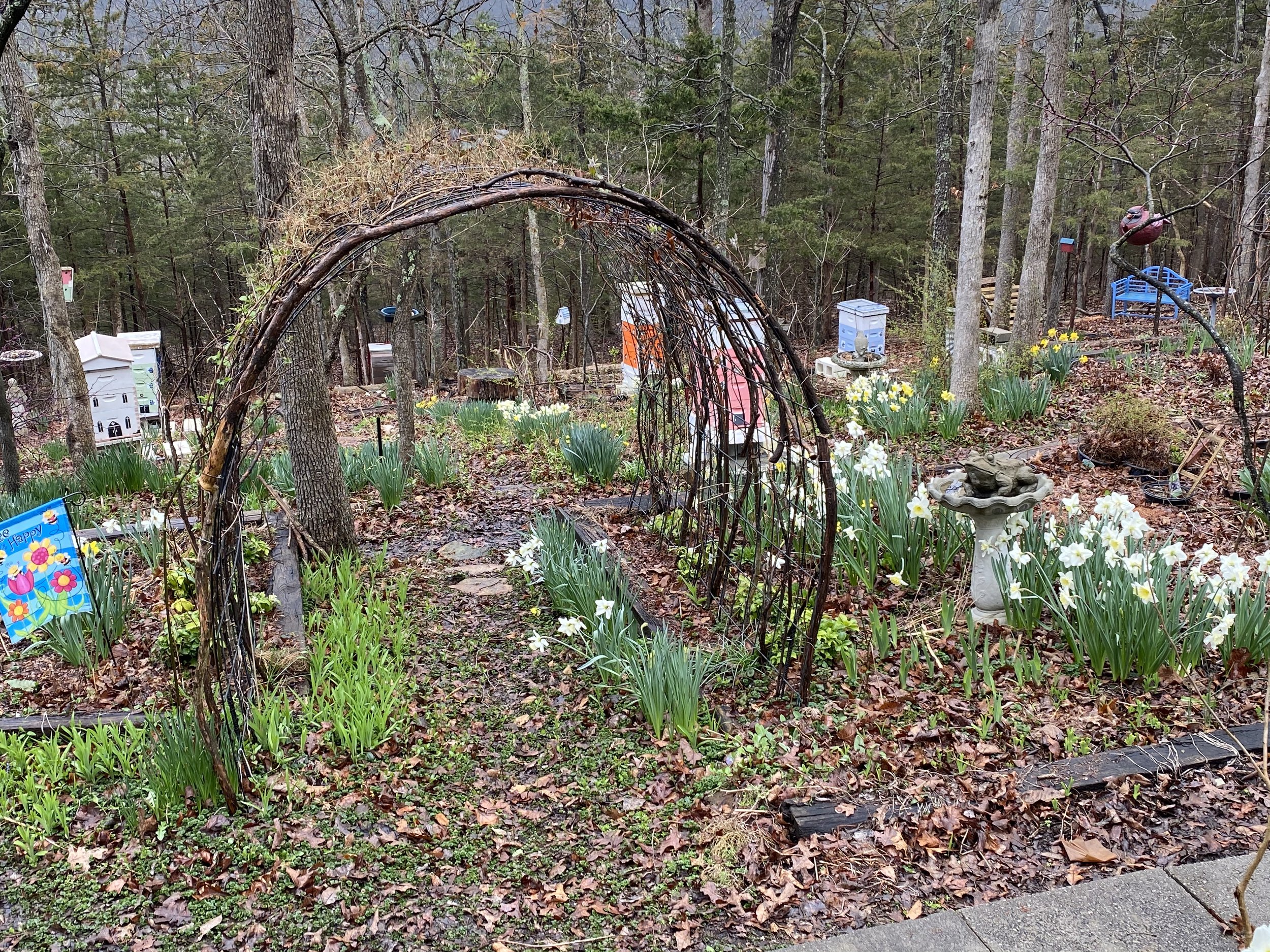April Gardening Task
/April Gardening Tasks
It’s “daffodil land” days in my Missouri garden, the name one of my former neighbors gave to my limestone hillside garden currently populated by a number of these wonderful spring bulbs. I didn’t buy most of them; they were either rescued, with permission, from old home sites or frequent flyer bulbs, bulbs that came from family gardens in other parts of the country.
We had what-I-hope-was our last cold spell earlier this week. Eastern redbuds and native Missouri flowering dogwoods may be showing their colors once again at the same time this year. I have to confess I have gardening tasks to complete but I tend to dilly-dally and enjoy the spring weather. But when I get focused:
Clean out composters and add to flower beds and fruit trees. Mix with existing soil for now; you will mulch this later. Leave a good bucket of finished compost as starter for the next compost batch and start adding leaves, grass clippings if you have them, kitchen scraps and water. Don’t forget to mix.
Put up your birdhouses if you haven’t already. Songbirds are natural pest control and add so much interest to our gardens. 60% of all bird species depend on insects for their food so if you have a lot of birds, you should naturally have less pests.
Prune lilacs immediately after they bloom. If you wait until later in the season, you will be cutting off next year’s blooms.
Continue to sow lettuce, spinach and radish seeds every 10 days or so for fresh spring salads in your pot garden. Call it your garden in pots, if you prefer.
If you like to grow peas, this is the last month to plant sugar snap peas and snow peas, they prefer cooler weather conditions. To keep their roots happy, mulch with cardboard to keep them cool, then add a layer of wood chips.
As daffodils and tulips continue to grow and bloom, sprinkle compost around them to keep the bulbs well fed. When the flowers fade, remove them by snipping off the flower heads. Leave the greenery until it turns yellow; the green leaves help the bulbs store energy for next season’s blooms. Don’t mow the leaves down with the lawn mower until they turn yellow or the bulbs will gradually become smaller and you will not have any more blooms next spring.
If you have a vegetable garden area, this is a good time to add cardboard to kill off any growth prior to summer planting. Don't till, the prevailing thought now is that tilling damages the soil ecosystem. Kill the plants you don’t want, make holes to plant the ones you do, or make trenches to plant seeds, and cover. Easy peasy. Who doesn’t like easy gardening??
Start your summer plants inside in containers you can transplant outside later; tomatoes, peppers, watermelons, squash, pumpkins, cucumbers, zucchini.
Don’t forget companion plants to reduce crop damage; basil is a good bug deterrent for a lot of plants and grows easily from seed.
Plant for pollinators as well. I love zinnias and so do butterflies and bees. Native plants such as New England Asters, yarrow and purple coneflowers are good choices for pollinators because they have long blooming seasons. For another good annual, try sunflower seeds. Birds will love the seeds in the fall.
Plant more native trees along with compact dwarf fruit trees. Although planting native flowers is still good for pollinators, trees provide better, and more reliable, pollen sources for bees. The smaller fruit trees are good pollen sources as well and, when pollinated by bees, will also give you easily accessible fruit to pick.












